Synopsis
'This is a very different kind of disaster movie. No Bruce Willis here, to save life on Earth from extinction. This is a movie to change perspectives - and now that we realise the high probability of such a strike from space, it is a timely warning indeed' (Dr. Brian May, Composer, 2014).
Synopsis
'This is a very different kind of disaster movie. No Bruce Willis here, to save life on Earth from extinction. This is a movie to change perspectives - and now that we realise the high probability of such a strike from space, it is a timely warning indeed' (Dr. Brian May, Composer, 2014).
The Story
The film is about Damon Miller, a filmmaker who is tasked to capture the last moments of life on Earth before it collides with an Asteroid. It’s a cross genre film with factual elements and real experts throughout but dramatized to have more of an impact on the audience. It is narrated by Damon's son, in the future, who has created the film as a tribute to his father.
Further reading
Further reading
51º NORTH, FURTHER READING
The story
"51º NORTH is not just about the end of the world but the story of a son who never met his father; and is trying to understand his actions through video footage." (Grigorij Richters, Director, 2014).
The story
"51º NORTH is not just about the end of the world but the story of a son who never met his father; and is trying to understand his actions through video footage." (Grigorij Richters, Director, 2014).
51º NORTH Synopsis
Damon Miller (Moritz von Zeddelmann) is a talented, young German filmmaker, living in London, grappling with the pressures of an impoverished profession and a dissolving relationship, who stumbles into the discovery that the Earth stands on the brink of an extraterrestrial disaster.
While Damon struggles to pay the bills, his dreams are clouded by a string of uninspiring corporate jobs. One routine assignment will change his life, though, as Damon is introduced to Professor Richards (Steve Nallon), an astrophysicist involved in the disturbing research into Near-Earth Objects. Damon takes a keen interest in the danger posed by asteroids to the Earth, and believes he has finally discovered the ideal subject for a documentary. His interest quickly turns into an obsession, however, as Damon delves ever deeper into his research, to the increasing distress of his newly pregnant girlfriend Ann (Dolly-Ann Osterloh) and his filmmaking partner Michael (Steven Cree).
With his loyal friend and cameraman Greg (Grigorij Richters) constantly at his side, Damon’s feverish explorations of the dangers posed by asteroids are filmed so they may be shared with the world. But when Damon goes public, he unwittingly puts himself in the path of shadowy British authorities with their own ambiguous agenda.
They inform Damon that the world will end in less than three weeks when a series of asteroids will strike the Earth. However, a glimmer of hope remains in the form of a secret space station orbiting the Earth that can house up to 2,000 people. In exchange for a ticket to this space station, they task Damon with documenting the final moments leading up to the asteroid strike.
Seeing an opportunity to save Ann and his unborn child, a chance to mend the rift his obsession has created, Damon accepts the assignment. As the end of days arrives, Damon watches London descend into madness, with families torn apart and friends lost. Armed only with his camera, Damon prepares to make the ultimate sacrifice to save the ones he loves.
By depicting cataclysmic events through the perspective of one individual, writer/director Grigorij Richters succeeds in crafting a truly human story about love, disillusionment and obsession in the face of overwhelming cosmic forces.
Cast
“It was absolutely wild. I don’t think that there is another word to describe it.” (Moritz von Zeddelmann, Damon, 2014)
Cast
“It was absolutely wild. I don’t think that there is another word to describe it.” (Moritz von Zeddelmann, Damon, 2014)
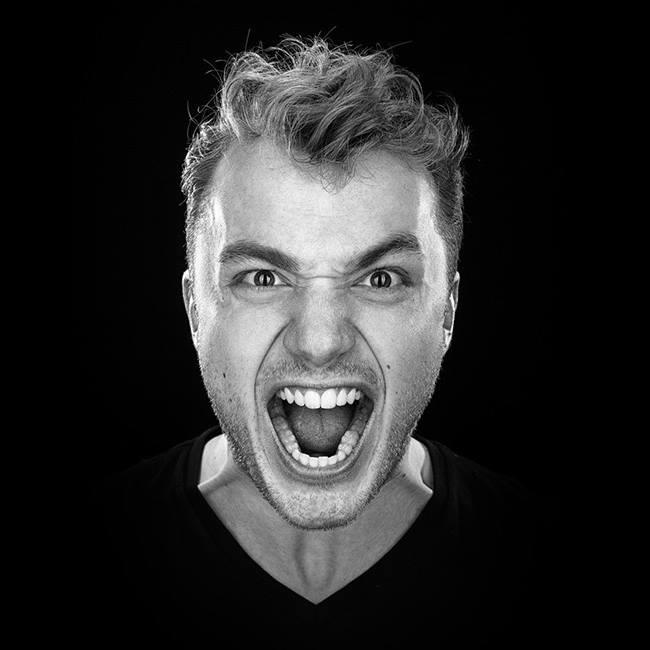
Moritz Von Zeddelmann
Damon Miller
A recent graduate of the Hamburg School of Dramatic Arts, Moritz is a relative newcomer to feature films, but has a lot to show for his short time in the industry. Comfortable acting in any medium, he has worked on roles in film, TV and theatre, whilst building towards lead feature roles, such as German Course.

Steven Cree
Michael Burlington
Steven has enjoyed roles in a wide variety of roles for both TV and film, from a regular role in the BBC’s boundary-pushing drama Lip Service to a recent appearance in the star-studded John Carter. His recent features also include 300: Rise of an Empire, Malificient,Tower Block & The Awakening.

Steve Nallon
Professor Andrew Richards
A veteran TV actor, with a regular presence on comedy shows such as Rory Bremner andSpitting Image, Steve is best known for his iconic portrayal of Margaret Thatcher. After over two decades of TV experience, with his Maggie role reprised as recently as 2011.

Jamie Doyle
Frank
Doyle has recently featured in diverse roles such as Brit indie flick Kicks and the horror mysteryFile Box, and has previously appeared in a variety of TV roles. A promising new actor, Doyle is currently working alongside Rupert Grint for the upcoming horror film Cross Country.
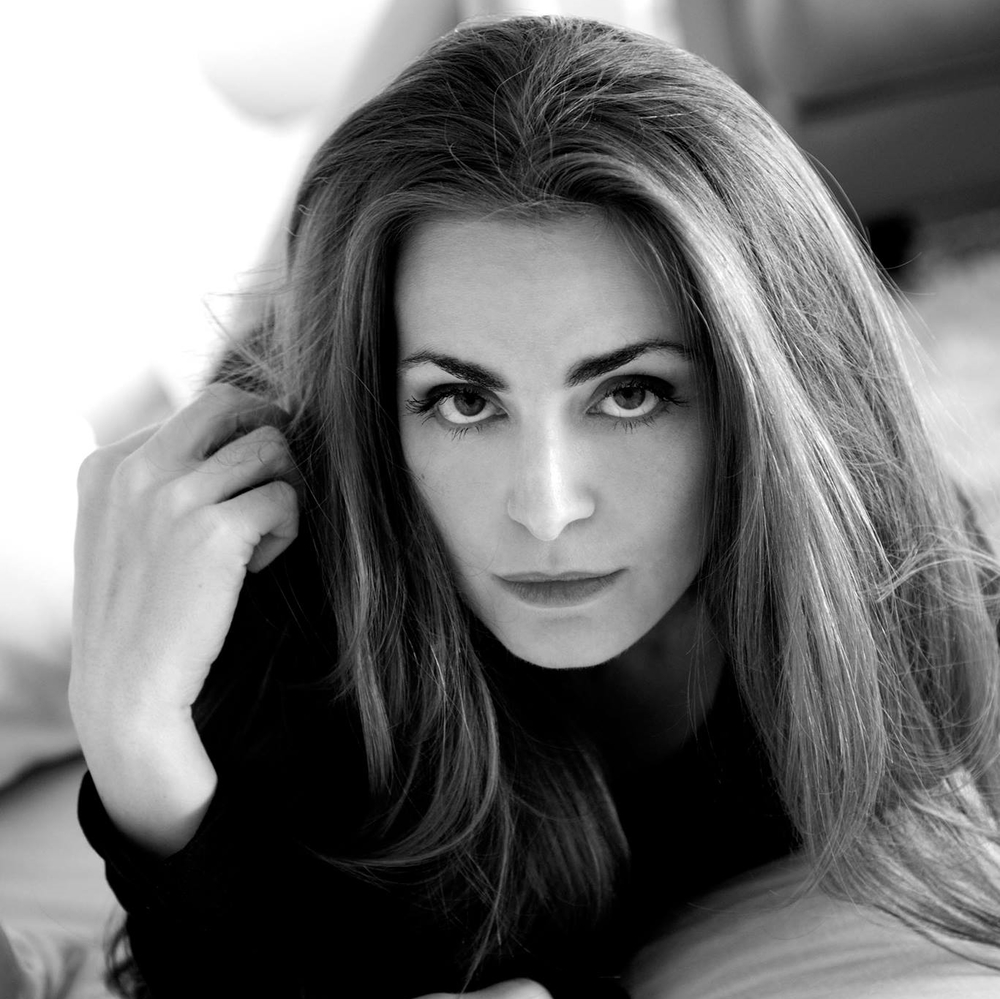
Dolly-Ann Osterloh
Ann
She studied interior design and fashion. She has been a professional model for most of her life and so the leap to the moving camera felt natural to her and so does her performance as Ann in 51 Degrees. Her first role in a film, short or long.

Crew
'I was inspired by the rushes, and honoured to be asked to contribute music for the film' (Dr. Brian May, Composer, 2014).
Crew
'I was inspired by the rushes, and honoured to be asked to contribute music for the film' (Dr. Brian May, Composer, 2014).
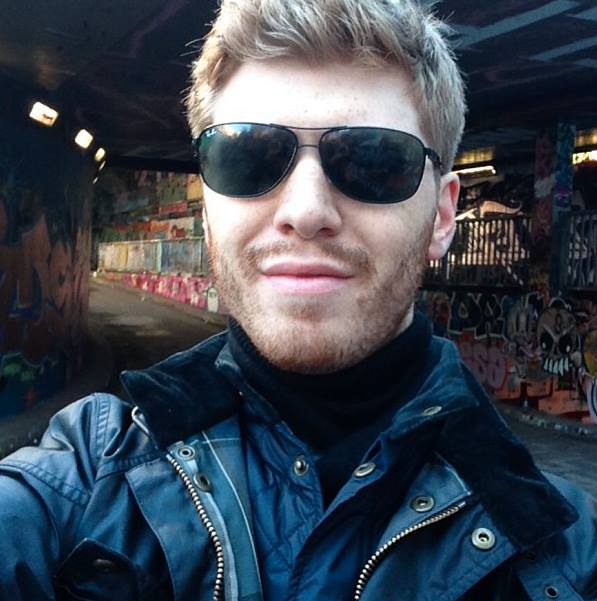
Grigorij ‘Greg’ Richters
Director/Producer
Born and raised in Hamburg, Germany, Richters has been making films since he was old enough to procure a camera. He bought his first second-hand camera at the age of 7, from money which he earned as a child model, and by the age of 12 had produced five short films. One of his early films, a mini-documentary about the childhood of Franz Kafka, was bought by the University of Hamburg. He finished his first feature-length screenplay at the age of 13 and went on to work with legendary German actor Mario Adorf. He directed a commercial for Meridian SPA and finished his A-Levels in the UK boarding school Hurtwood House. In 2006 he directed a short film IMAGINE while studying Direction at FAMU in Prague. He started work on his debut feature, 51 Degrees, in 2010.

Alex Souabni
Producer
With a background in European Politics and languages, Souabni’s passion for film has always taken priority in his studies, and he has been active in the film industry since graduating from Royal Holloway in 2011. Since then, he directed and produced his own documentary, Tunisia – What Next?, exploring the Jasmine Revolution, and quickly became devoted to the production of 51 Degrees after striking up a friendship with director Richters. Bilingual and multicultural, Souabni had a colourfully mobile upbringing having lived in London, Paris, Nice and the Ivory Coast, and is currently a producer for Films United Ltd.
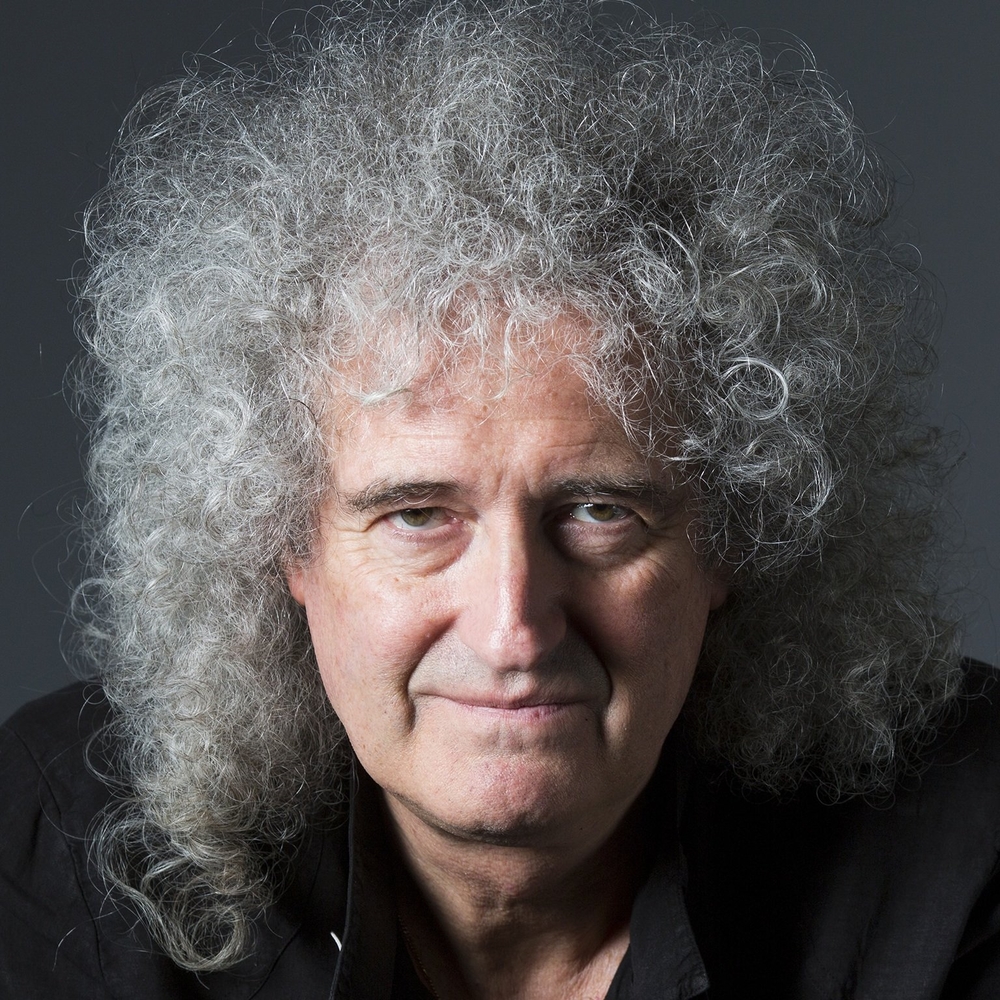
Brian May, CBE
Composer
Brian May, CBE, has a PHD in astrophysics from Imperial College, and was Chancellor of Liverpool John Moores University from 2008 to 2013. He has also published research articles in the field of the solar Zodiacal dust cloud. Dr May is most widely known as lead guitarist and founding member of the legendary rock band Queen. He is an active animal rights advocate and was appointed a vice-president of animal welfare charity the RSPCA in September 2012.
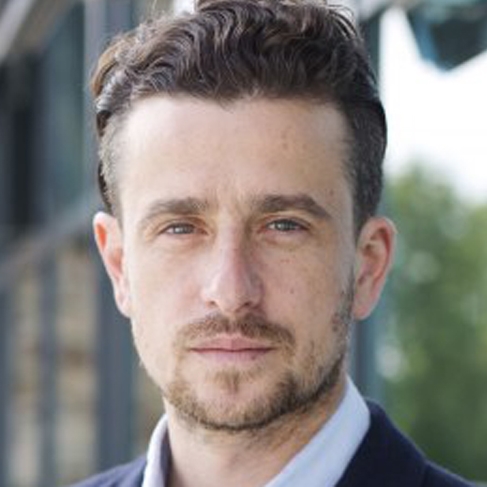
Hamish Jenkinson
Executive Producer
Hamish A. Jenkinson is a Chairman of Free the Children UK, Trustee of the Kevin Spacey Foundation and Director of the Old Vic Tunnels. He has been the Executive Assistant to Kevin Spacey since 2005. In 2011, he joined the board of Belarus Free Theatre. Jenkinson has also recently been appointed an ambassador for The Prince’s Trust.

Greg Powell
Stunt Coordinator
With a film career stretching back to the seventies, Greg has acted as stunt coordinator for everyone from James Bond (starting with The Spy Who Loved Me) to Harry Potter (most recently The Deathly Hallows). Greg’s credentials, both performing and coordinating stunts, span some of the most entertaining films and television drama of the past two generations, including Hollywood blockbusters such as the Bourne Ultimatum and the epic World War 2 series Band of Brothers.

Stephen Barker
Post-Production Supervisor
With experience in productions of a wide range of genres and starting his career off with a bang with the acclaimed Alien, Barker has acted as production-supervisor for over 60 titles, beginning in the early ‘80s. His prolific credits include work on the highly acclaimed featuresChocolat, Sliding Doors and Death at a Funeral, and recently he has done extensive production for ITV with work on the long-standing comedy-drama Doc Martin and the atmospheric drama Whitechapel.

Marc Hutchings
VFX Supervisor
Marc has worked on digital effects and composition for some of the most visually impressive features of recent years. His diverse experience has produced films as varied as the action-packed X Men: The Last Stand andFirst Class, the visually stunning Immortals, and the uniquely animated Fantastic Mr Fox, as well as the hugely critically acclaimed The King’s Speech.

Director's Statement
“The film has become it’s own entity, it really became a huge part of my life” (Grigorij Richters, Director, 2014).
Director's Statement
“The film has become it’s own entity, it really became a huge part of my life” (Grigorij Richters, Director, 2014).
Director's Statement
On paper 51º NORTH is a film about the End of the World but to me the film has always been about Damon’s journey as a human being and how he deals with the circumstances of his life. I decided early on that the film was going to be presented as realistically as possible. I wanted the film to have a documentary feel to it and so I needed the camera to be a part of Damon’s life – not merely operating as a narrative device – that’s why I created Greg the character who would film Damon on a daily basis and capture every moment of his life. I set a very clear rule: every shot we see in the film has to come from Greg. The problem was that I couldn’t cut as it would disrupt the flow of the film and break the rules I had set for myself.
It was at this point that I decided to add a second element to tell the story: the CCTV camera. I’ve always thought that there was something very dramatic about the fact that London is under constant surveillance by millions of CCTV cameras. This approach enabled me to keep the realism of the film while also giving me the opportunity to peer beyond Damon’s horizon and incorporate some of London’s most beautiful imagery.
When I first stumbled onto the subject of asteroids back in 2010 I was absolutely shocked. Over the next few weeks, no one could reach me. I was locked inside my office reading through hundreds of research papers and books. I couldn’t stop and I realised I had to make a movie about this and raise people’s awareness on the subject. However, I wasn’t sure what to make of all the information I had accumulated over the previous weeks. It felt like a documentary but I knew that if I wanted to reach a wider audience, it had to be a feature film with a narrative that extended beyond asteroids. So I decided to base the main character on myself essentially – a filmmaker who went through a similar process as I did at the time.
When I started writing this film I knew I had to keep the cast-list to a minimum to prevent it from getting out of hand. The Damon character was cast very early on, before I had even worked the whole idea for the film. I was very aware that I needed top actors for the roles of Michael and Prof. Richards. After watching over 5,000 video reels on Spotlight, I finally found two actors who were perfect for each part and luckily they responded positively to the material.
We shot 51º NORTH over a period of 13 months in three stages. The first time around, in March/April 2011, we shot for 6 weeks in London. Many of the scenes were made up as we went along, such as the ‘Crazy Room’ sequences (see preview clips). At that time, neither the Piccadilly Circus nor the Stabbing scenes existed. After that first stage was over, I edited over 200 hours of footage into a 3-hour cut. This process was very helpful because it allowed me to have a much better idea of where the film was headed. I jumped straight into a two-month writing session and that’s where many of the big scenes were first born, including the Piccadilly Circus and Stabbing scenes
In October 2011 we started out on our second shoot. This time around we had a cast and crew of over 200 people and more than 2,000 extras. However, it was very important to me that we keep the feel of the film very similar to the first time around as a bigger crew can often cause too many distractions. But no matter how wild we went with some of our scenes or stunts, the story always took precedence.
I am finally at a point where I can enjoy the process. Up until now everything has been too crazy, with barely any time to breathe. In April, our Editor David Milkins came onboard and has helped me immensely. Now that all the elements are coming together I can wholeheartedly say that I am very proud of what we have created. I really hope you’ll get a chance to see it.
About the Production
It’s somewhere between the ultra-naturalism that you get with someone like Ken Loach and the controlled realism of a more traditional, commercial movie. - (Steve Nallon, Prof Richards, 2014).
About the Production
It’s somewhere between the ultra-naturalism that you get with someone like Ken Loach and the controlled realism of a more traditional, commercial movie. - (Steve Nallon, Prof Richards, 2014).
About the Production
51º NORTH began life as an open project: a chance to capitalise on a revolutionary piece of technology and an opportunity to advance a budding filmmaking partnership. When Moritz von Zeddelmann (Damon) first approached writer/director Grigorij Richters, determined to work together, the canvas was blank, with Richters determined to take advantage of his new equipment: ‘I had had my Canon 5D Mark II DSLR camera for a few months and thought, I’ve got to do something with this camera because it’s just too good to be true.’
Richters was keen to stretch beyond his usual interests for this project. During the research stage, Richters was inspired by a BBC documentary calledAsteroids: The Good, The Bad and The Ugly, which explores the threats posed by asteroids to our planet. The programme proved to be an extremely unsettling experience for Richters: ‘In the past I had never had any interests in asteroids but after watching this documentary, I couldn’t sleep for days. It was terrifying.’ He had found the subject for his new film.
The project began in 2010 with the original intention of keeping the production short – no longer than three months – and using a small crew of no more than 10 people. Two years on, the production is drawing to a close with a cast and crew of more than 2,500 people.
“We were trying to find the story as we went along. It was painting by doing.”
Richters chose to develop the story and the central character of Damon gradually, through rehearsal and improvisation. When they started shooting in the spring of 2011, Moritz von Zeddelmann recalls being armed with only a ‘25 page script with no dialogue and a massive 70 page biography of Damon.’ Richters’ intention was to allow von Zeddelmann to grow into the character organically while the story developed around him. ‘It was a discovery process. We were trying to find the story as we went along. It was painting by doing’, says Richters.
“It’s somewhere between the ultra-naturalism that you get with someone like Ken Loach and the controlled realism of a more traditional, commercial movie.”
Many of the actors have remarked on this partiular aspect of Richters’ directorial style and his penchant for improvisation. Steve Nallon (Prof. Richards) found the process to be extremely liberating on a creative front: ‘Greg has a fascinating way of working,’ says Nallon, ‘We would prepare for each scene by talking it through with Greg and the other actors to get a general idea of what the scene is about, then develop ‘lamp-post’ moments along the way that you have to get to but Greg leaves the actual dialogue to the actors themselves. It’s somewhere between the ultra-naturalism that you get with someone like Ken Loach and the controlled realism of a more traditional, commercial movie.’
To prepare for the central role of Damon, von Zeddelmann submerged himself in the character: ‘I wanted to make Damon as authentic as possible since I had to rely on him totally in all my improvisations. So after consulting with Greg, I decided to stay in character for the duration of the shoot. In order to never break character, we even told the crew that my actual name was Damon. I buried myself in asteroid research and tried to build up as many layers to Damon as I possibly could. I wouldn’t call it method acting,’ Moritz notes modestly, ‘I was just trying give the best performance I could on set.’
“It was absolutely wild. I don’t think that there is another word to describe it.”
The shoot itself was guerrilla filmmaking at its purest. In order to keep costs down whilst maintaining the frantic, vérité style of the film, Richters decided to employ a skeleton crew with himself and his Director of Photography, James Kinsman, serving as cameramen. Richters and his team tore through London shooting quickly and efficiently in and around many of the capital’s most famous landmarks, including Tower Bridge, Waterloo Train Station and Piccadilly Circus. The production team attempted to secure as many permits to film on real locations as possible but, as is the case with many independent film productions, other recourses were occasionally necessary. As von Zeddelmann recalls, ‘It was absolutely wild. I don’t think that there is another word to describe it. There were days when I thought that I wouldn’t live to grow old. But in the end, I believe that’s the magic of this movie.’
Stephen Barker, the film’s Post-Production Supervisor, also believes that this approach has ultimately worked in their favour, ‘I think the crew used the guerrilla filmmaking format very well. The scenes and locations shot in high profile parts of London are very impressive. In fact it reminds me of something Shekhar Kapur once told me of how in some ways he preferred ‘guerilla film making’ to the more structured and scheduled method of shooting.’
At one point during the shoot, Richters and his team were filming outside the US Embassy near Oxford Street. While they were setting up, a member of the embassy personnel called the police to alert them of a man wearing a suspicious backpack and holding an object resembling a grenade. Six police officers turned up and Richters had to explain what they were doing. No charges were made but one police officer did offer the director his script.
“Within a matter of minutes, a London Metropolitan counter-terrorism unit had arrived and surrounded the production team.”
One of the most precarious incidents of the production occurred during filming at King’s Reach Tower, an abandoned skyscraper on London’s South Bank. The location serves as the setting for the final scene in which Damon climbs up to the roof of a skyscraper to watch the asteroid descend on the city. The location was perfect: at one-hundred and eleven metres, King’s Reach Tower looms above everything on the south side of the river and gazes over the heart of central London. However, shooting at this panoramic location involved an element of risk. As Richters explains, ‘At the moment it’s all boarded up. It’s completely empty. Homeless people and drug addicts use it as a squat. There are stories of people getting raped inside. The police apparently never enter because it’s too dangerous.’
The original plan was to climb the Tower in the middle of the night with a team of 14 people, including 6 extras and a van full of equipment. However, while the team were setting up on the ground floor, a security guard spotted the sound recordist, Jassim Jaffer, standing outside the building beside a step-ladder with a heavy backpack bursting with mysterious wires and technical equipment.
Within a matter of minutes, a London Metropolitan counter-terrorism unit had arrived and surrounded the production team. Producer Alex Souabni recalls the confusion and panic: ‘There were sirens and headlights pointed at us. They were shouting, telling us to put our hands on the wall.’ The police unit performed a strip search on the crew members and found a set of handcuff keys and $10,000 in cash in Richters’ wallet. Naturally, it was only prop money. After the dust settled, the situation was explained and the production team was told to leave the premises.
Undeterred, Richters returned to the tower at 4am, accompanied only by his DoP and leading man. They climbed the building’s thirty-one storeys with nothing but their iPhones to light the way. They finally reached the roof half an hour before sunrise. As von Zeddelmann recalls, ‘It was an amazing view up there. We managed to shoot everything we needed and headed back down. We put on our reflective vests so that we looked like construction workers and walked straight out of the front door with all of our ‘measuring equipment’.
The largest scene of the film, in which the news of the asteroid’s imminent collision with Earth is broadcast on the screens atop Piccadilly Circus in front of thousands of panicked onlookers, proved to be one of the most logistically and technically challenging scenes of the whole production.
“Forthcoming British sci-fi 51º NORTH turned Piccadilly Circus into a scene of unchecked chaos on Saturday night as hundreds of extras gathered together to show the panic of a city threatened by an oncoming asteroid.”
The producers had obtained a permit to film with 200 extras, but an open casting call ended up attracting more than 1,000 extras. As filming got underway, more people gathered and the numbers swelled to over 2,000, making it one of the largest film productions to shoot at Piccadilly Circus. With extras blocking all the roads, Piccadilly Circus gradually came to a standstill. Westminster City Council turned up and threatened to shut the production down if Richters and his team failed to rein in their extras and allow vehicles to pass through.
For such a low-budget production, the film succeeded in attracting some of the most talented people in the industry, including Greg Powell and Marc Hutchings who served on the film as Stunt Coordinator and Visual Effects Supervisor respectively. Powell has performed and coordinated stunts on some of the very best Hollywood blockbusters, such the James Bond, Harry Potter, Lord of the Rings and Pirates of the Caribbean franchises. Hutchings has similarly proven to be at the very vanguard of visual effects in recent years having worked on a diverse range of films, which includeFantastic Mr Fox, X-Men: First Class, The Immortals as well as the upcoming G.I. Joe: Retaliation.
“He [Richters] knew exactly what he wanted when we turned up on location. At the same time, he was very open-minded and wanted to listen to all of my suggestions.”
Powell was persuaded to join the production after Richters and Souabni met with him and made an impassioned pitch of their ideas for the stunt sequences. ‘For a young director, he seemed to be very knowledgeable’, Powell notes, ‘He knew exactly what he wanted when we turned up on location. At the same time, he was very open-minded and wanted to listen to all of my suggestions.’
51º NORTH has achieved things its producers could never have dreamed of when they first embarked on it in 2010. What began as a personal story about one filmmaker’s relation to his own craft grew to become the story of a city and the cosmic forces beyond our command. ‘The film has become it’s own entity’, says Richters, ‘It really became a huge part of my life. But in my eyes it will never be finished, not until I die.’
“The film has become it’s own entity, it really became a huge part of my life”
Technical Information
Technical Information
Runtime: 85 min
Colour: Colour
Aspect Ratio: 16:9
Language: English
Year of Completion: 2014
Camera: HD DSLR – Canon 5D Mark II, RED, Sony EX 3, GoPro
Locations:
Nottingham Place, London, UK (interiors and exteriors)
Piccadilly Circus, London, UK (exteriors)
Waterloo Station, London, UK (exteriors)
Buckingham Palace, London, UK (exteriors)
King’s Reach Tower, London, UK (interiors and exteriors)
Old Vic Tunnels, London, UK (exteriors)
Cambridge, London, UK (exteriors)
Guildford, London, UK (exteriors)
Powys, Wales, London, UK (exteriors)